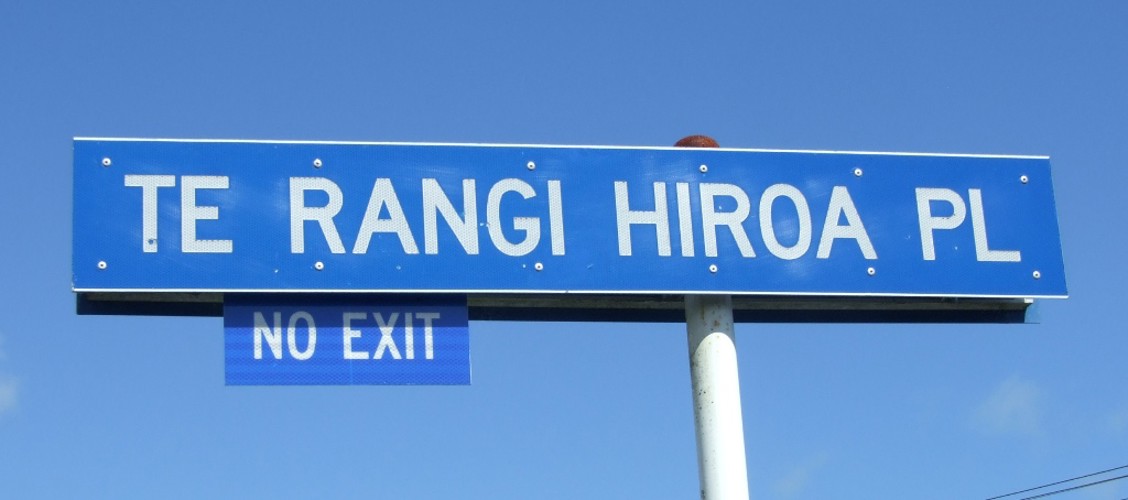 Te Rangi Hiroa Place sign (2012). Mike Gooch. Word on the street image collection.
Te Rangi Hiroa Place sign (2012). Mike Gooch. Word on the street image collection.
 Te Rangi Hiroa Place sign (2012). Mike Gooch. Word on the street image collection.
Te Rangi Hiroa Place sign (2012). Mike Gooch. Word on the street image collection.
Te Rangi Hīroa Place is named after Sir Peter Henry Buck also known as Te Rangi Hīroa K.C.M.G., D.S.O. who was born in Urenui
His father William Buck and his wife Ngarongo-ki-tua could not have children, so Rina (Ngarongo's close relative) became a surrogate mother for the couple. Sadly, both his birth mother and Ngarongo died before Peter had finished Urenui Primary School.
Peter enrolled at Te Aute College where he spent three years (1896-1898), becoming dux and passing his entry exams to the University of Otago Medical School.
Peter graduated in 1904, to become a house surgeon at Dunedin Hospital from 1905 - 1908. Also in 1905 he married Margaret Wilson. Although they had no children, their marriage lasted a lifetime. From there Buck's life falls broadly into three phases.
The first phase was devoted to public health and politics as a doctor and politician. Buck was in parliament from 1909 to 1914, succeeding Hone Heke as member for Northern Māori. He initially advocated that Māori should adopt Pākehā ways, but later promoted the preservation and revival of Māori culture.
The second phase was a military career. With the outbreak of war in 1914, Buck volunteered for the New Zealand Forces as a medical officer. He later transferred to the frontline, in France and Belgium, reaching the rank of major and becoming second in command of the New Zealand Pioneer Battalion. Back in New Zealand in 1919, he was Medical Officer for Māori Health and in 1921 he became director of the Division of Māori Hygiene.
The third phase was mostly scientific. His interest in Polynesian peoples, led him to accept an offer of a five-year research fellowship at the Bishop Museum in Hawaii. After gaining a professorship at Yale University, he returned to the Bishop in 1936, as director. He devoted the rest of his life to anthropology, receiving a string of academic prizes for his work. In 1946, he was knighted.
Suffering ill health he made a pilgrimage to his place of birth, Urenui in 1949. He died on 1 December, 1951 and was cremated. His ashes were placed temporarily at the Nuuanu cemetery. He was finally laid to rest on the 8 August, 1954, with a moving ceremony at Ōkoki under a huge symbolic waka prow.
This story was originally published in the Taranaki Daily News.
Please do not reproduce these images without permission from Puke Ariki.
Contact us for more information or you can order images online here.